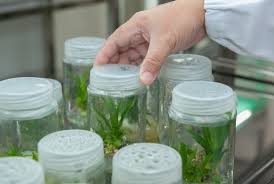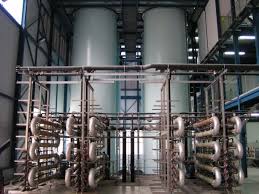In this article, you will know what constitutes a method, how to identify a good method for a given process and how to modify or adapt an existing method to meet new challenges.
What is a Method?
We are all aware that each time we need to do something, either bake a cake, solve a mathematical problem or prepare a pot of soup, the first question you must ask is “how do I do it”? Or, “how can I solve this problem?”
The search for how to tackle a task is the search for a method of how to solve a problem. That is, ability to solve a problem depends on our knowledge of the method for solving that problem.
Method has therefore been defined as a procedure for accomplishing or approaching a task, especially a systematic or established procedure, or a step by step process used to achieve a desired goal.
A method can be either a physical or a mental process: physical as in reading of the concentration of dissolved metal in a sample using an atomic absorption spectrophotometer (AAS) and mental as in making decisions, finding the answers to questions or solving problems in an established manner.
The later suggests that methods could be overwhelming and involve all processes in problem solving including hypothesis formulation, data collection, analysis, interpretation and decision-making.
An effective method is, therefore, made up of “critical parts,” i.e. separate steps that must all be addressed and re- addressed effectively for the method to be successful. A method can also be scientific or non-scientific.
A scientific method is a body of techniques for investigating phenomena, acquiring new knowledge or correcting and integrating previous knowledge.
This means that it must be based on empirical and measurable evidence subject to specific principles of reasoning. Other characteristic of a scientific method that distinguishes it from other methods is that it must be objective and reproducible.
There are four established elements of a scientific method. These are characterisation (ability to identify properties of a subject matter and use them to identify and describe the subject matter); definition (most acceptable units for describing a subject matter both by nature and degree); hypothesis development (alternative options of a given condition which may determine the plausibility of a method) and experiment (tests carried out to test the plausibility of hypothesis or predictions).
If the test-results contradict the predictions, the hypotheses which made them are called into question and become less tenable. If, however, the results confirm the predictions, then the hypotheses are considered more likely to be correct.
Identifying Right Methods for a Process
Identifying the right method for a task involves first identifying available methods and determining that which most effectively meets the goals of a particular study.
This means that since there may be many goals of a study the choice of the right method or methods may depend on many factors. Since these factors may interact in a complex way, choosing the best method is often not as easy as it might seem. As a result the following steps may be required to be followed:
Then choose the methods that did the best job of achieving the goals. The process may involve a consideration of accuracy (closeness of a test result to the true value), precision (closeness to each other of repeated measurement of the same or comparable quantity (ies) and cost.
Precision is inversely related to standard error. When the standard error is small, sample estimates are more precise; when the standard error is large, sample estimates are less precise. Cost is a very important factor in choosing a method.
Available resources must be able to sustain a chosen method to the end of experimentation if not the entire process will be a failure. Availability of expertise and relevant materials and equipment must also be taken into consideration in choosing a method.
There is no gain choosing a method for which the materials, equipment and expertise are not readily available. This also includes spare parts for repairs and maintenance. Where any or all of these are not readily available the entire process is bound to failure, and it may have been better to choose a less than best methods which satisfied most other conditions.

In conclusion,a method is a procedure for accomplishing or approaching a task, especially a systematic or established procedure, or a step by step process used to achieve a desired goal.
Methods therefore vary according to the goal of an investigation. The goal of an investigation therefore determines the best method to be chosen from a list of several possible methods that may be available for performing a task.
The choice of a good method depends on the goal or objectives of a study and that because there might be several objectives in a single study; the choice of the best method is always a complex process.
Read Also : Factors Influencing Soil Moisture
The process involves a listing of the goals of a study, identifying all possible methods for each goal and selecting the best method based on the ability of each method to achieve a given goal.

